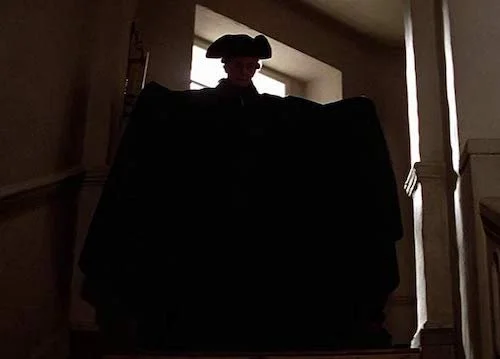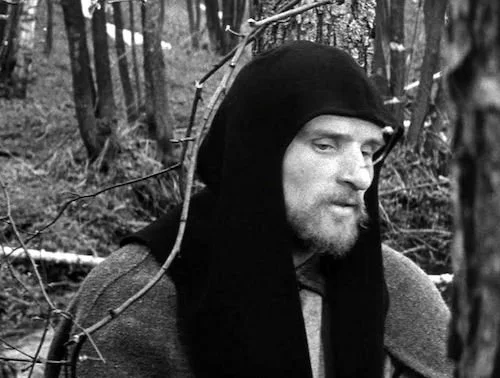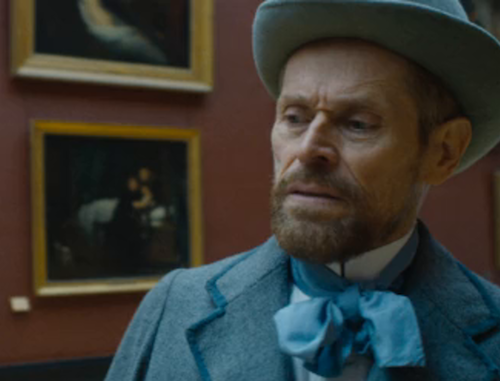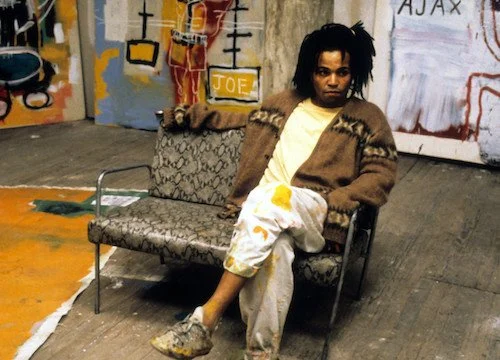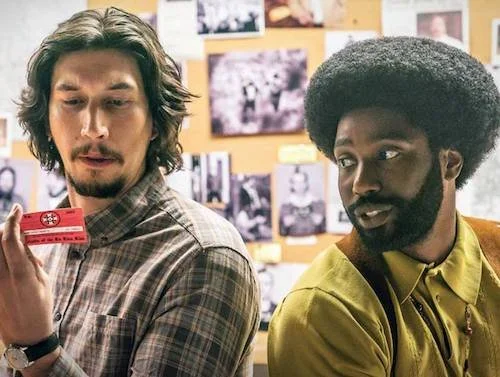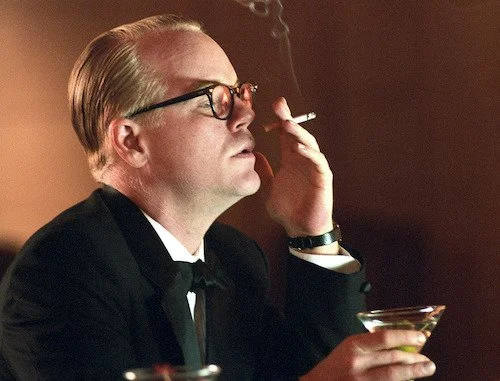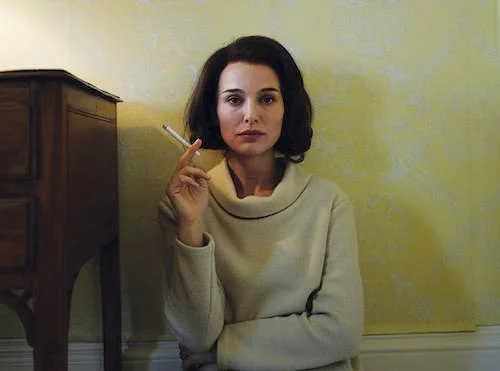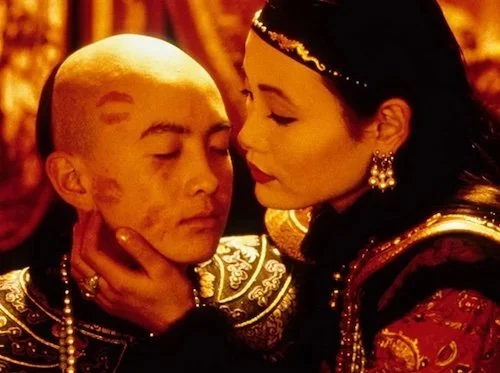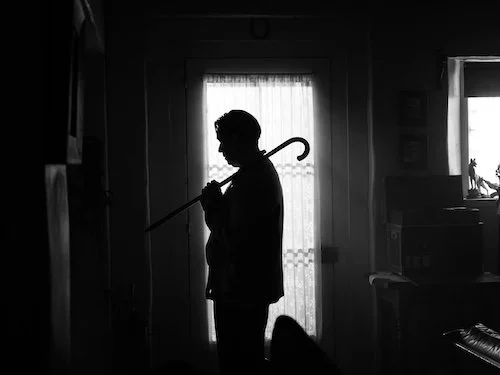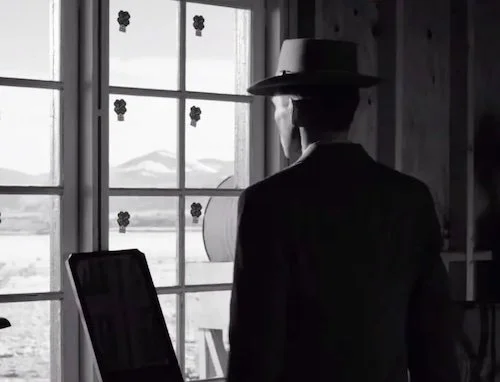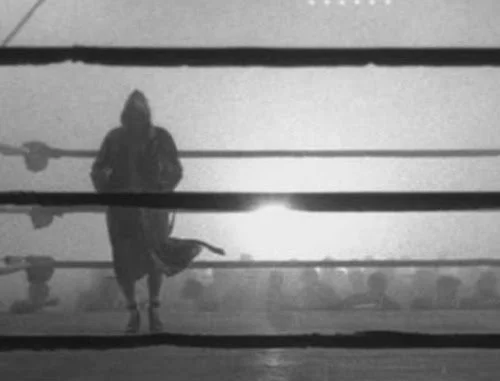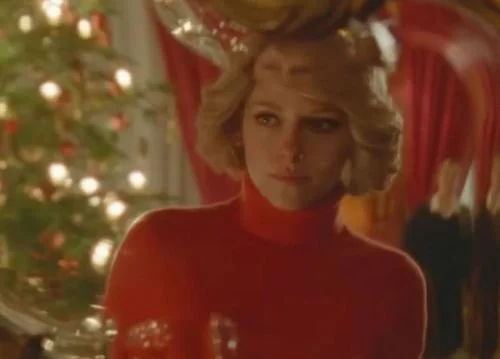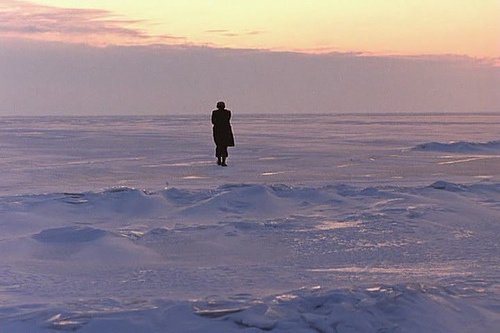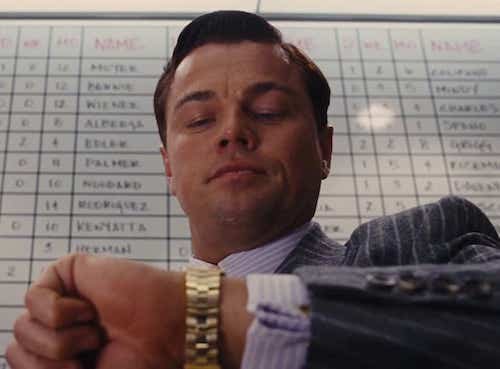32 Unique Biopics
Written by Andreas Babiolakis
Year after year, we are slapped in the face with biographical pictures that feel lazy, churned out to the point of being void of substance, and as though Wikipedia was the main source of inspiration. We get these films because they work. They sell well at the box office because super fans know everything about their favourite subject and still need to ensure they haven’t missed anything important (they usually haven’t). They pick up awards left right and centre because x portrays y so seamlessly (even if the art of mimicry is prioritized over natural, effective acting). That isn’t to say that every traditional biopic is vapid, but enough of them are. It feels pointless to watch them, especially when you are a fan of the subjects and stories.
Then again, the opposite happens from time to time. You stumble upon a biopic that is so inventive or different that you begin to marvel at the very idea of biopics again. There are also creative biopics that maybe fall flat, and it’s easy to recognize their attempts whilst acknowledging their outcomes; something like Loving Vincent comes to mind, where it is the very first oil-painted animated film ever meant to tell a chapter of Vincent van Gogh’s final days via his own artwork (it, unfortunately, is a bit of a stale film despite being such an artistic achievement). I want to cover some biopics that are singular and do work well as great films. You will find quite a few modern examples, but I also wanted to dip back in time to find other strong instances as well. I also understand that the very title of “biopic” is a murky one, so some of the following entries may feel like they break the rules a little bit. Additionally, I am certain I have missed some other important films and I may do a continuation of this list in the future, but I also think what I have here will suffice for now. In case you’re looking for them, here are thirty two unique biopics that are worth watching.
24 Hour Party People
Can you keep up with Tony Wilson and the rise and fall of Factory Records? Michael Winterbottom sure tries to with 24 Hour People: a meta, self-aware depiction. of the British punk scene and its offspring. While the film is about the label’s co-founder, it is also about an entire movement and its unstoppable force, and that is what sticks out the most for fans of this mythical tale of the power of music and culture.
127 Hours
127 Hours is mainly about the terrifying event in Aron Ralston’s life (the one where the mountaineer got trapped under a bolder for the length of time depicted in the film’s title), but Danny Boyle makes this survival story into a celebration and understanding of its subject’s entire life. How did he get to this point? How will he get out? We live inside Ralston’s hallucinating mind as he struggles to get out of this alive.
All That Jazz
Bob Fosse was clearly feeling daring this late into his career when he directed All That Jazz: a film that is autobiographical enough that everyone knows most of it is true. He captures his vices and self-destruction on the big screen for all the world to see. He also acts as the role of a prophet by trying to ascertain what his morbid future holds at the end of his life; the explosion after years of slow-burning, perfectionist, artistic, self-loathing ruin.
Amadeus
While a revisionist tale, Amadeus takes the life of Wolfgang Amadeus Mozart and turns it into a morality story of guilt, arrogance, envy, and torture. It questions the minds and hearts of artists, the corrosion that jealousy brings, and the mental health of perfectionists and struggling artists. This could have been a multi-hour flattering session of a beloved composer; it instead remains one of the most fascinating films based on music and artistry.
American Splendor
Harvey Pekar can only be linked to his comic series American Splendor, mainly because he writes about himself and it is impossible to split the artist and his craft in this case. Shari Springer Berman and Robert Pulcini don’t bother with their adaptation of the same name: a biopic that dips in and out of its animated comic style — as well as documentary footage — with pure ease, as if this style of converged storytelling was typical.
Andrei Rublev
Andrei Tarkovsky took the story of icon painter Andrei Rublev and turned his life into a series of Bible-like parables. Andrei Rublev is a celebration of an artist who worked with still-imaged paintings that told entire lifetimes. It similarly conveys as much as it can through as little as possible, and that couldn’t be more true in the final act: the only portion of the film in colour, where Rublev’s artwork is allowed to truly speak for itself.
At Eternity’s Gate
You will find Julian Schnabel’s name popping up here quite a bit because the artist-turned-director is probably one of the more inventive auteurs when it comes to the concept of biopics. Exhibit A is At Eternity’s Gate: a Vincent van Gogh film that actually does a great job of depicting the tortured painter’s last days. All of the sets and costumes look as though they came straight out of the Dutch icon’s artworks, and we live via his paintings to pull us out of the darkness.
Basquiat
Julian Schnabel’s first film was naturally a biopic about another painter. Basquiat is a loving-yet-harrowing tribute to Jeal-Michel Basquiat, featuring a breakthrough performance by Jeffrey Wright. Told via the late painter’s style as closely as possible, it was clear that this first experiment — where an artist directed a film about another artist — was a clear success.
Before Night Falls
I promise this is the last Julian Schnabel film (for now: his magnum opus is just around the corner), but I cannot ignore Before Night Falls. An adaptation of Reinaldo Arenas’ exhilarating memoir, Schnabel captures the writer’s experiences during the then-ongoing political divide of Cuba and his battle with AIDS. Not many adaptations feel authentically like an autobiography when they are directed by a different person, but Schnabel recreates Arenas’ voice here with near perfection.
BlacKkKlansman
Spike Lee’s big comeback film is a dramedy biopic that takes huge inspiration from blaxploitation films. BlacKkKlansman is already such an insane story: Ron Stallworth is a new officer recruit that goes undercover as a fake member of the Ku Klux Klan; the kicker is that Stallworth is Black. The creative workarounds found in this real story mixed with Lee’s signature style make BlacKkKlansman a riveting, unbelievable watch that is also urgently important.
Capote
While only a particular snippet of the late author’s life, Capote does have something major to say about the great Truman Capote during the writing process of his magnum opus, In Cold Blood. As if his entire life is determined and reliant on this novel doing well, Capote does whatever it takes for his true crime book to take off; part of this dilemma comes from his own moral compass being tested by how he approaches his interviews with the serial killers currently on death row.
The Color of Pomegranates
Perhaps the most unique biopic of all time, Sergei Parajanov’s masterpiece, The Color of Pomegranates, is as experimental as feature films can get. Based on the life and times of poet Sayat-Nova, the entire film is told via complex images, as if these shots are living iconography. An incredibly cryptic film, this is a rare biopic that forces you to analyze and interpret what you are seeing. You may not learn much about Sayat-Nova during The Color of Pomegranates, but you will become familiar with his soul and spirit in the barest sense.
The Diving Bell and the Butterfly
Julian Schnabel’s name returns one final time on this list with his greatest achievement. The Diving Bell and the Butterfly depict the final years of the famous Elle editor Jean-Dominique Bauby, who becomes paralyzed via locked-in syndrome post-stroke. A major portion of the film is told from a first-person perspective, as we hear Bauby’s thoughts narrate his realization that his life has been changed forever. The remainder is murky, surreal, and hazy: a collection of memories in a suffering mind that is clinging on in order to be able to tell his story.
I’m Not There
Is it impossible to truly get to the essence of Bob Dylan in one biopic? Maybe. Todd Haynes decided to do something different anyway with I’m Not There: a multi-narrative look at the singer-songwriter’s life via characters and caricatures (with different actors taking on his many personas). As multifaceted as his wildest songs, I’m Not There may be the closest we get to deciphering the ethos surrounding Bob Dylan.
Jackie
Grief envelops us, and Pablo Larraín wanted to get this side of Jackie Kennedy’s story after the assassination of her presidential husband. Jackie is a retelling of the First Lady’s times in the White House and her darkest thoughts during the most harrowing chapters of her life. A hyper-drama as melodramatic as anything you’ll find Darren Aronofsky filming (it’s fitting that he is a producer on this project), Jackie is exceptionally heavy storytelling about loss and suffering.
The Last Emperor
Puyi was the last emperor of the Forbidden City, and Bernardo Bertolucci wanted to tell a much larger picture than just this peculiar anecdote. What we get instead is a multi-generational observation of shifting politics and zeitgeists throughout Asia through the eyes of a person that was an emperor, a free man, and a citizen yet was always forced to think and behave differently. As we travel from the Qing Dynasty to the rise of Communism, The Last Emperor is an artistic, sublime epic.
Love & Mercy
Predating the exhausting stream of music biopics that we have been dealt lately is Love & Mercy: an earnest biopic surrounding Brian Wilson of The Beach Boys. We experience two portions of his life through his mind: the creation of Pet Sounds and Smile (his two magnum opuses, the latter only ever being released partially completed unfortunately) and the height of his battle with mental health issues in the eighties. As he is mistreated and deteriorates in the sixties, we simultaneously see him get pulled out of the darkness later in his life.
Mank
It was the late Jack Fincher’s dream to bring light to the efforts of one Herman J. Mankiewicz who wrote (or co-wrote, depending on who you ask) the screenplay for Citizen Kane (often thought of as an Orson Welles project through and through). Son David Fincher brought his dad’s mission to fruition with Mank and went as far as possible, even making the film feel like it came right out of the forties via its nostalgic-yet-synthetic aesthetic (there are even cue marks mimicking the holes that projectionists refer to to know when to change reels).
Marie Antoinette
Sofia Coppola’s Marie Antoinette was originally decried for its anachronistic choices, but the film is (rightfully) championed for its different take on envisioning the very nature of a real person. Did the last queen of France actually wear Converse shoes? No, but maybe she would have in the present day. When the public was searching for carbon copy biopics, they didn’t understand Marie Antoinette’s ability to link us to a figure from the past in fresh, recognizable ways. Now that we’re frustrated with the same old thing, this film is clearly the masterwork it always was.
Mishima: A Life in Four Chapters
Paul Schrader’s masterpiece, Mishima: A Life in Four Chapters, aims to decipher the complexities of author and political philosopher Yukio Mishima. He does just that in this aesthetically invigorating experience that matches the spirit of Mishima’s poetic texts with the intelligence of his essays. What we get is an extraordinary film that takes us to the outer edges of mind and heart: an unforgettable pilgrimage that proves that Schrader maybe understood the late writer more than most.
Moneyball
Billy Beane’s reassessment of how sports teams can be assembled in Moneyball is full of a flurry of numbers and statistics. It’s precisely how the man worked, but it also makes for quite a different biographical depiction. To enter the mind of such fascinating thinking is one thing. For Bennett Miller (who also directed Capote), Aaron Sorkin, and Steven Zaillian to simplify these concepts enough for everyone to understand is a feat in and of itself.
The New World
It may be a stretch to consider this Pocahontas story a biopic, but Terrence Malick explores the soul of the iconic figure with The New World enough for me to consider this an analysis of her life and those around her (particularly the colonialism that would come, and the life of Captain John Smith; it’s essentially his biopic too). With natural lighting and spiritual, dreamy storytelling, we transport to the past via memories that feel like our own (attached to experiences we never had).
Oppenheimer
The most recent film on this list, naturally, is Christopher Nolan’s Oppenheimer: a retelling of the Manhattan Project and the creation of the atomic bomb. In typical Nolan fashion, Robert J. Oppenheimer’s life is told in a non-linear fashion, as two parts (fission versus fusion, colour versus black-and-white, subjectivity versus objectivity) cause the film to become as cyclical as it is labyrinthine.
Raging Bull
Martin Scorsese never wanted to make a sports film; even his approaches to films about real people aren’t typically traditional. This leads us to Raging Bull: a film about boxer Jake LaMotta that doesn’t care about romanticizing or simplifying his life. We instead get an analysis of self-destruction, the changing shifts in America’s culture, and the darkest depths of egotism. Raging Bull deconstructs and reassembles both sports dramas and biopics in a way that hasn’t been replicated since.
The Social Network
At the time, David Fincher’s The Social Network was an eerie, chilling, mesmerizing thriller about our need to find solace in the appreciation of others, particularly online; we have never been more connected yet felt so alone. The film has aged brilliantly for many reasons and one of them is its ability to predict just how ruthless online business culture would get. Mark Zuckerberg wasn’t as bad as the film made him out to be: he’s actually worse. We’ve also been pulled along for the ride. Fincher tried to warn us.
Spencer
After the success of Jackie, Pablo Larraín went deeper down the rabbit hole with Spencer. This time his subject was Princess Diana during the holidays at the height of the gossip surrounding Prince Charles’ affair. Princess Diana’s mind is haunted by monstrous delusions, and Larraín hypothesizes all of them in this biopic that eventually goes full-on arthouse in the name of understanding.
Steve Jobs
The infamy surrounding the Apple mogul Steve Jobs was at an all time high after his passing, and Danny Boyle and Aaron Sorkin both knew this. Enter Steve Jobs: a biopic comprised of the manic events surrounding three different Apple product launches. We learn more about the psyche of a tricky figure in pop culture while feeling our heat beat thump its way out of our chest as this film gets progressively more and more anxious.
The Story of Adèle H.
French New Wave master François Truffaut occasionally played ball, and such an example is The Story of Adèle H.: a biopic comprised of the diary entries of the titular daughter of author Victor Hugo. Adèle’s story is a tragic one as she battled mental health issues and the shadow of her father, and Truffaut’s heartbreaking picture captures all of it as candidly as possible, during a time when many still weren’t prepared to listen to the cries for help from those that needed to be heard.
Superstar: The Karen Carpenter Story
Todd Haynes’ breakthrough effort is one many haven’t actually seen (not as intended anyway, as piracy is likely the way you’ll have to go with this one). That’s because the haunting Superstar: The Karen Carpenter Story is one that the late singer/drummer’s estate doesn’t want you to see. Told entirely through the use of toy dolls, Karen Carpenter’s numerous struggles — between the pressures of fame and anorexia nervosa — are on full display here. Even with the juvenile storytelling methods, Superstar is a nauseating and difficult watch.
Thirty Two Short Films About Glenn Gould
The reason why thirty two films felt just right for such a list like this. Pianist Glenn Gould is such a multifaceted figure that such an ambitious premise would likely be the only way we could get to know him properly. While some of these shorts are documentaries and interviews, some are acted-out vignettes of the quirky icon as an effort to best understand the inner workings of his mind. This film performs just as chaotically yet harmoniously as the variations of the late, beloved musician.
Tick, Tick… Boom!
The late Jonathan Larson covered the qualms in his own difficult life in Tick, Tick… Boom! as a stage production; he sadly wouldn’t live to see the extent of where his masterpiece, Rent, would go. Lin-Manuel Miranda’s directorial debut is an adaptation that acts as a love letter to Larson that is unabashedly his style through and through, as we leap from a stage rendition of his life’s story to an immersive, cinematic variation that actually pulls us into his reality.
The Wolf of Wall Street
The use of an unreliable narrator is usually saved for fictional features, and yet Martin Scorsese and company saw fit to utilize it in a biographical picture. It makes sense to have a film about Jordan Belfort be untrustworthy, given that The Wolf of Wall Street is about one of the biggest criminals in contemporary history. You can only take this comedy-drama (or horror, if you ask me) with a grain of salt and choose to believe what you will from the words of a proven hustler; that’s half the fun here.
Andreas Babiolakis has a Masters degree in Film and Photography Preservation and Collections Management from Toronto Metropolitan University, as well as a Bachelors degree in Cinema Studies from York University. His favourite times of year are the Criterion Collection flash sales and the annual Toronto International Film Festival.





